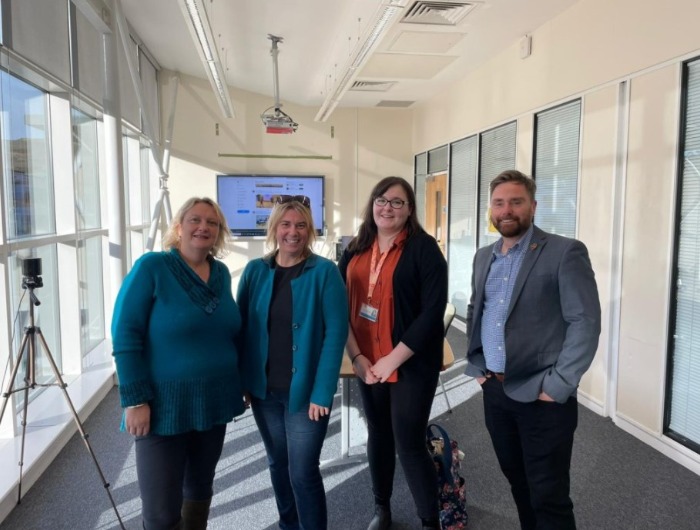Virtual Reality (VR)
Using the HTC VIVE Virtual Reality (VR) platforms and headsets, Coleg y Cymoedd have integrated Rezzil’s globally recognised elite sports training applications Player22 and Rezzil Index across their football academies.
The VR training gives sporting students an opportunity to hone their skills in a safe controlled environment. It monitors their techniques using cognitive analytics, and makes targeted suggestions to improve their athletic performance. It also helps students with their training whilst they may be recovering from injury.
Coleg y Cymoedd are also exploring content portals such as VIVE Port to enable students to encounter experiences that they would never be able to in real life. VR enables you to imagine the thoughts and feelings of groups of people throughout history. You might even see a glimpse into the future. During our visit, we observed the inside of a bomber from World War II, and went for a stroll on the surface of the moon. VR can also be quite effective in teaching empathy, as we experienced in the Stanford University’s ‘Becoming Homeless’ simulation.
Skills-Based Learning
Aside from being engaging, VR allows you to practice your skills and experience new things without risk. There are VR simulations which put you in front of an audience to practice your public speaking skills, or help test your electrical skills by wiring the mains of a house. With the use of Primal VR and 3D Organon VR Anatomy, students can open up the human body to explore anatomy and run tests to examine how a change in stats or bodily functions affects a person’s health.
Likewise, VR has been used in other FE institutions to increase confidence and help teach soft skills for employability, by allowing students to ‘swap bodies’ with the interviewer to see how they come across when being interviewed.
Augmented Reality (AR)
Coleg y Cymoedd say their Augmented Reality (AR) smart glasses are becoming popular in vocational subjects areas. These include construction and hairdressing.
If a student misses a hairdressing workshop or a demonstration of machinery in construction, it can be difficult to explain the practical techniques shown first-hand.
The cameras are integrated into the AR smartglasses so tutors can record point-of-view videos, as if the students are watching it for themselves. The smart glasses also link to apps such as Microsoft Teams to allow live streaming or uploading directly after filming.
Filming is hands-free, so camera people are not required. The point-of-view camera angle reduces the need for storyboarding and multiple camera angles when filming equipment or machinery being used. Strategically placed QR codes ensure active use of the recordings, which allows access to learning when and where necessary.
There is great potential for the point-of-view camera angle with the AR glasses in other areas of education. For example, creating a point-of-view virtual tour of a college campus, or even a library induction.
Accessibility
Whilst it is exciting to discuss the possibilities of VR and AR, it is vital to consider accessibility. In VR, we need to determine any adaptations students with motor disabilities might need for the controllers. Students with sensory (vision and hearing) disabilities might need adjustments for the headsets. As someone who is Hard of Hearing, I did find it difficult to hear in the VR headsets. So, we need to explore the possibility of linking them to assistive technologies such as Roger Pens.
We need to consider how audio narration can enhance the experience for students with visual disabilities. Interestingly, work has already kicked off in this area as some VR companies are creating VR games for people with low vision. Many VR simulations and games such as Arcas Path are designed to work with just the headset, which can help support people who may find it difficult to use hand-held controllers.
We’d like to thank Richard and his colleagues for their valuable knowledge and demonstrations of the practical applications of AR and VR. It has been enlightening to see first-hand how the college is embedding these technologies into the curriculum.

